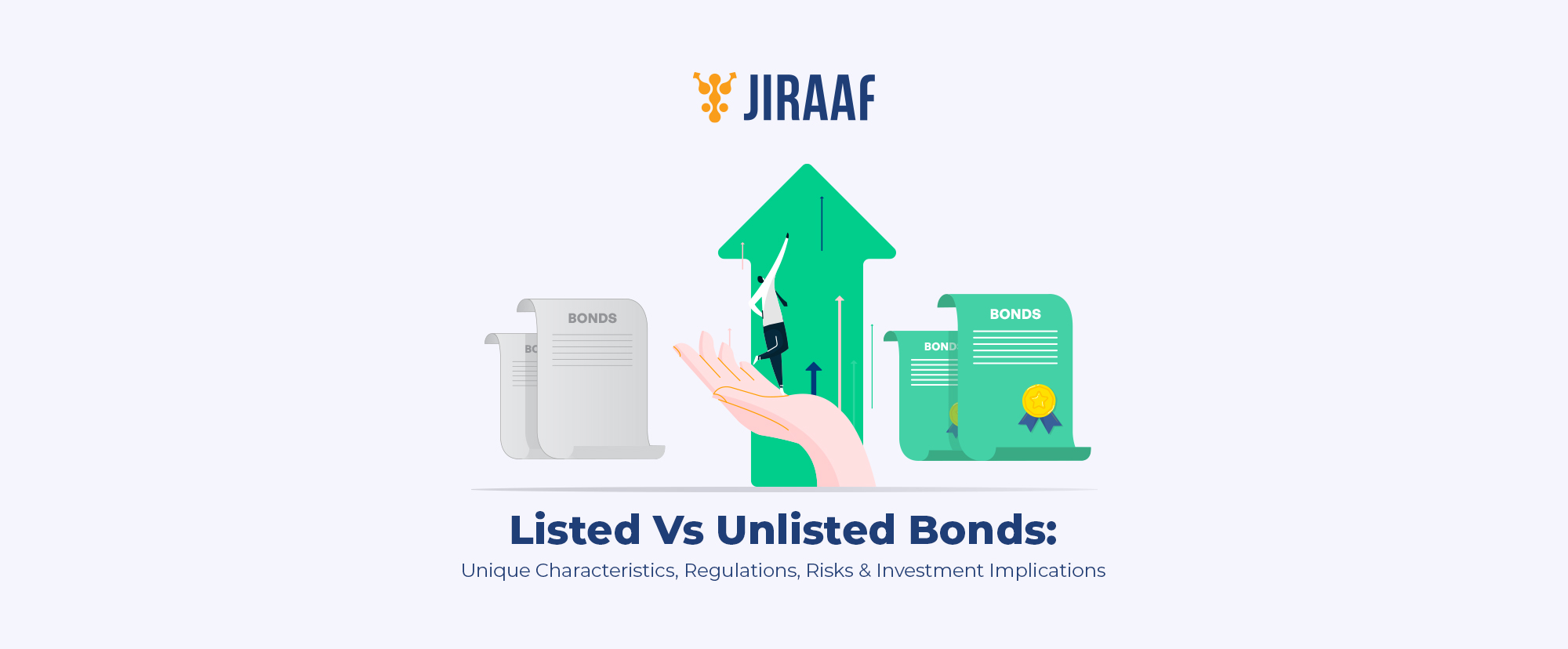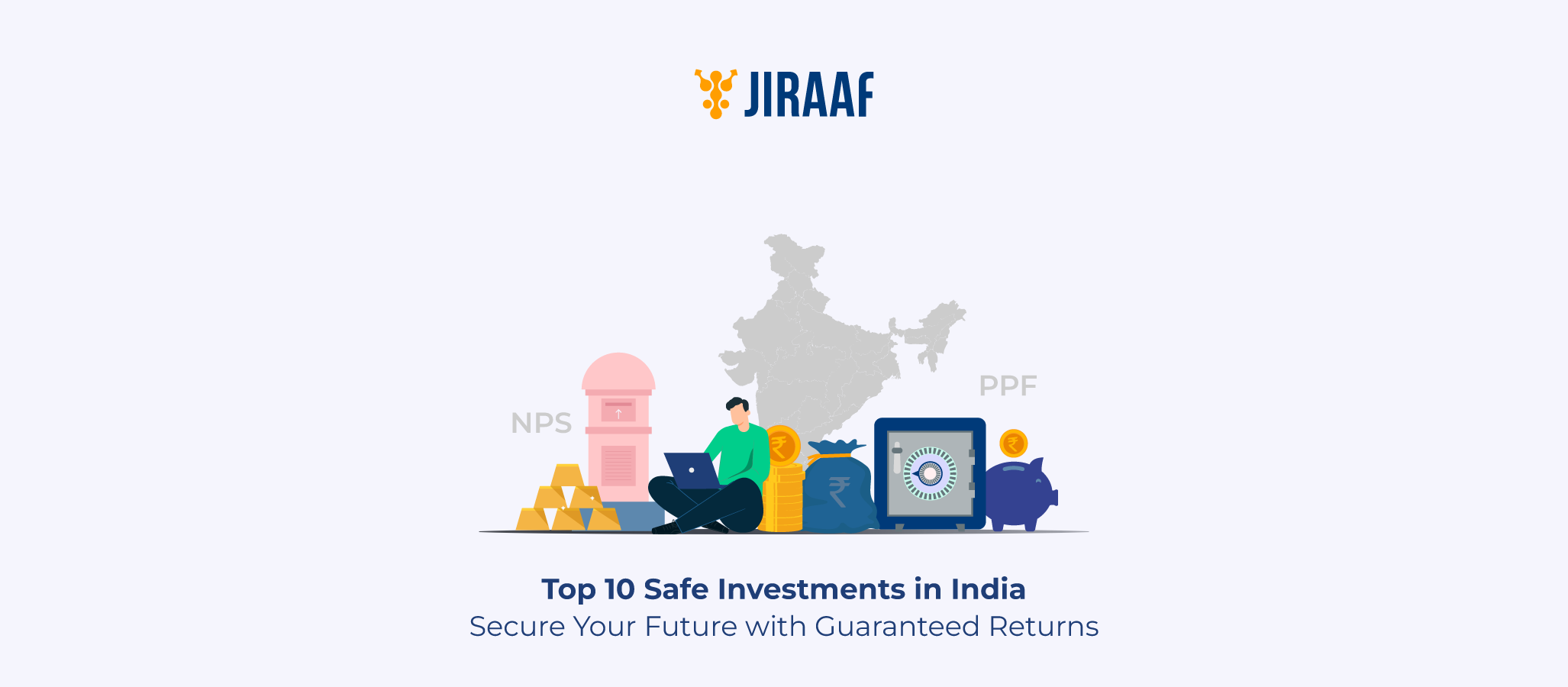Bonds are a crucial component of the financial markets, offering fixed-income opportunities to investors and raising capital for companies. Bonds can be of two kinds – listed and unlisted. Through this blog, let’s understand the key differences between these bonds and see how they might fit into your investment strategy.
Overview of the Indian Bond Market
In 2023, the India bond market reached an impressive value of over ₹200 lakh crore. Government bonds accounted for ₹161.1 lakh crore, making up for a dominant share of 78% of the market, while corporate bonds contributed ₹44.2 lakh crore, holding the remaining 22%. The bond market has seen a remarkable 77% growth over the last 5 years, reflecting the increasing trust and investment in both government and corporate bonds. This growth underscores the stability and appeal of bonds as an investment.
What are Listed Bonds?
Listed bonds that are traded on recognized stock exchanges, such as the Bombay Stock Exchange (BSE) or the National Stock Exchange (NSE). These bonds are issued by governments, public sector units, and companies to raise capital and are available for investors to buy and sell through the exchange.
Since they are listed, these bonds offer higher transparency and are subject to stringent regulations, which provide greater security for investors. The ease of trading also adds liquidity, making listed bonds a popular choice for investors who want the flexibility to buy and sell bonds easily.
What are Unlisted Bonds?
Unlisted bonds are not traded on major stock exchanges such as the BSE or NSE. Typically issued by smaller companies or private entities, these bonds might be harder to buy or sell quickly, and there’s often less information available about the issuing company’s financial health. However, unlisted bonds sometimes offer higher returns, which might be appealing to you if you have an appetite for a relatively higher risk .
Listed Bonds vs Unlisted Bonds: Quick Comparison
| Aspect | Listed Bonds | Unlisted Bonds |
| Ownership | Widely accessible to retail and institutional investors; held in dematerialized form | Primarily held by institutional investors and high net worth individuals, |
| Regulation | Stringent regulations and oversight | Less transparency and reduced regulatory oversight |
| Credit Risk | Typically, lower risk due to a rigorous vetting process and ongoing disclosure requirements | Potentially higher risk due to limited public information and scrutiny; requires more in-depth due diligence by investors |
| Secondary Market | Active on the secondary market on stock exchanges, | Limited activity on the secondary market; trades occur over-the-counter (OTC) with less price transparency |
| Trading Costs | Trading costs are usually lower due to standardised procedures and competition among brokers | Trading costs are higher due to less standardisation and potential difficulty in finding counterparties |
| Credit Rating | Mandatory credit rating by recognized rating agencies | Credit rating may not be mandatory |
Investment Risks Associated with Listed and Unlisted Bonds:
| Risk Factor | Listed Bonds | Unlisted Bonds |
| Credit Risk | More vulnerable to interest rate changes, causing bond prices to move inversely | Less affected by market volatility, but interest rate fluctuations can still indirectly influence valuation |
| Market Risk | Easier for individual investors to trade due to availability on public exchanges | Generally limited to institutional or accredited investors, making it harder for the public to participate |
| Default Risk | Default risk is lower, as issuers undergo more rigorous scrutiny. Defaults are publicly disclosed, providing some level of predictability. | Risks are higher due to fewer disclosure requirements. Assessing default risk demands thorough investigation into the company’s financial status. |
| Transparency Risk | Transparency risk is low as issuers must regularly share financial information and reports | Transparency risk is higher as there’s limited information available about the issuer’s financial well-being. |
| Fraud Risk | Fraud risk is low, due to stricter regulatory controls and auditing standards. | Fraud risk is potentially higher, given the weaker oversight compared to listed bonds. |
| Recovery in Default | Recovery is facilitated through structured resolution processes like those governed by SEBI and stock exchanges. | Recovery may be harder, often depending on direct negotiations or legal action. |
| Secondary Market | A well-developed secondary market provides greater liquidity and more exit options. | A restricted or non-existent secondary market can lock in capital, making it less flexible for investors to exit. |
Which Type of Bond is Right for You?
You must assess the fitment of a bond in your financial portfolio basis the following metrics.
- Risk Tolerance: Listed bonds generally have a lower credit, and fraud risks due to stricter regulations and transparency, making them suitable for investors with lower risk tolerance. Unlisted bonds on the other hand might offer higher returns but come with increased risks, which could be better suited for those with a higher risk tolerance.
- Desired Returns: If you’re seeking potentially higher returns, unlisted bonds might be the way to go, offering higher yields to compensate for their risks. Listed bonds typically provide lower yields but offer more stability and predictable returns.
- Valuation and Transparency: Listed bonds benefit from market-driven prices and regular disclosures, providing clear valuation and transparency. Unlisted bonds may have less frequent pricing updates and limited information about the issuer, making valuation and transparency more challenging.
Assessing these factors through the lens of your investment goals and preferences will help you determine which type of bond best aligns with your financial strategy.
How to Invest in Listed and Unlisted Bonds?
- Listed Bonds: Start by researching available options using financial news, bond market platforms, and brokerage services. Look for bonds with favourable credit ratings, yields, and terms. Open an account with a brokerage firm that provides access to bond markets, and fund it accordingly. Use the broker’s trading platform to purchase listed bonds, choosing between limit or market orders based on your investment strategy. Monitor bond performance and interest payments regularly and manage your investment by buying or selling bonds through the brokerage account as needed.
- Unlisted Bonds: Begin by identifying potential opportunities through private placements or over-the-counter (OTC) markets. You may take the help of financial advisors or bond dealers specialising in unlisted securities to identify the right funds. Conduct thorough due diligence on the issuer’s financial health and bond terms, as unlisted bonds often have less transparency. Engage with bond dealers or advisors to negotiate purchase terms and complete the transaction. Be prepared for potentially less frequent pricing updates and more complex selling procedures. Monitor the bond’s performance and manage your investment carefully, keeping in mind that liquidity may be lower compared to listed bonds.
Listed vs Unlisted Bonds: A Recap
Choosing between listed and unlisted bonds depends on your preferences for transparency, transaction ease, financial goals, return expectations, and risk tolerance. Listed bonds offer greater transparency and are easier to buy and sell, attracting a broader range of investors. Unlisted bonds, while potentially offering higher returns, come with relatively less information availability and liquidity. Assess your risk tolerance and investment goals to determine which type of bond best fits your financial strategy.
FAQs: Listed and Unlisted Bonds
Which Offers Higher Returns, Listed or Unlisted Bonds?
Generally, unlisted bonds offer higher interest rates compared to listed bonds. This compensates for their lower liquidity and relatively higher credit risk.
Are Listed Bonds Safer than Unlisted Bonds?
Listed bonds are generally considered safer due to factors like:
- Regulation: Issuers of listed bonds must comply with stricter rules set by (Securities and Exchange Board of India (SEBI).
- Transparency: Listed bonds offer more transparency as their performance and issuer information are readily available on exchanges.
Is it Easier to Buy and Sell Listed Bonds?
Yes, listed bonds are much easier to buy and sell on stock exchanges. You can place orders through brokers and benefit from market liquidity. Unlisted bonds require contacting the issuer directly or finding a buyer/seller through private channels.
Discover fixed income investments with Jiraaf, a SEBI registered online bonds platform that educates and brings access to a wide array of bonds. Sign up today to explore diversified fixed income investment opportunities to support your goal-based wealth creation journey. Start investing!









